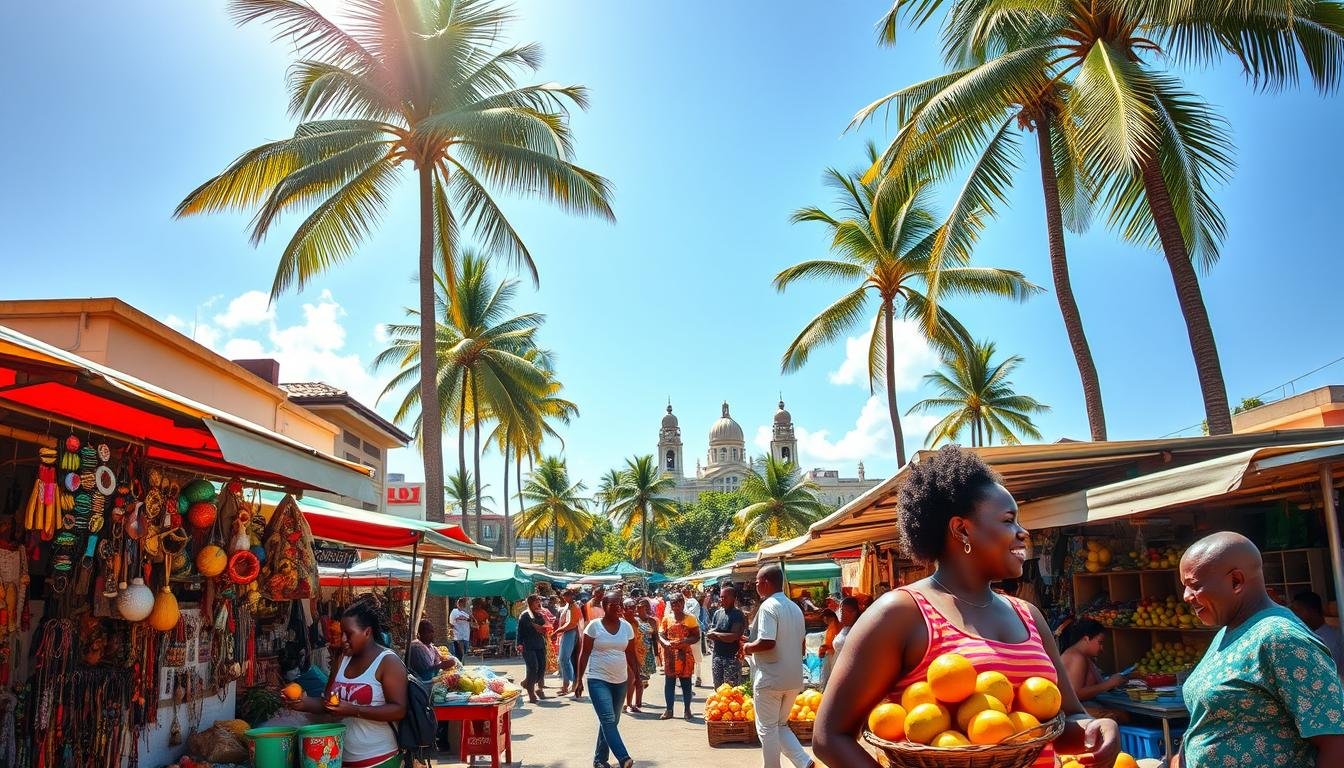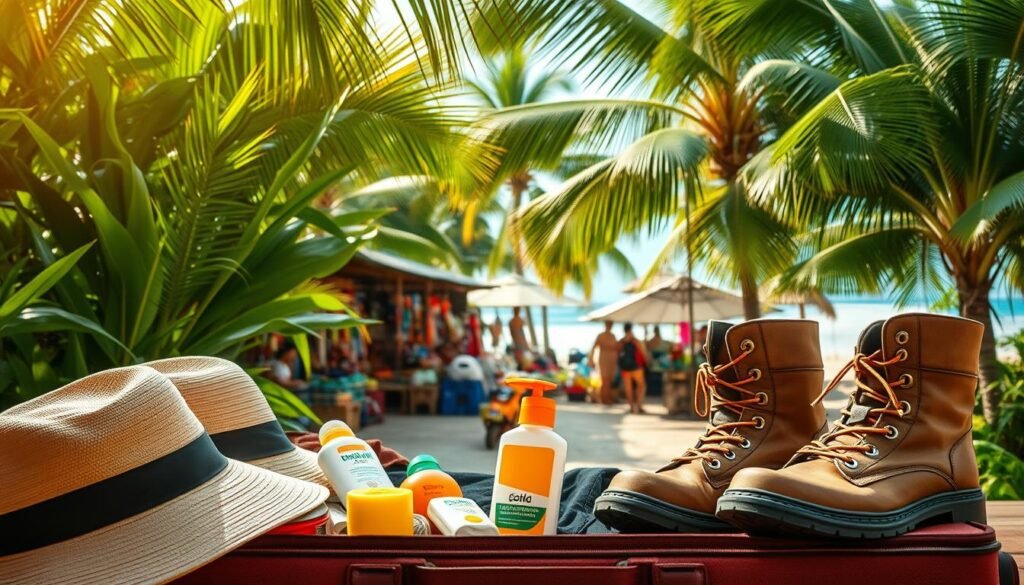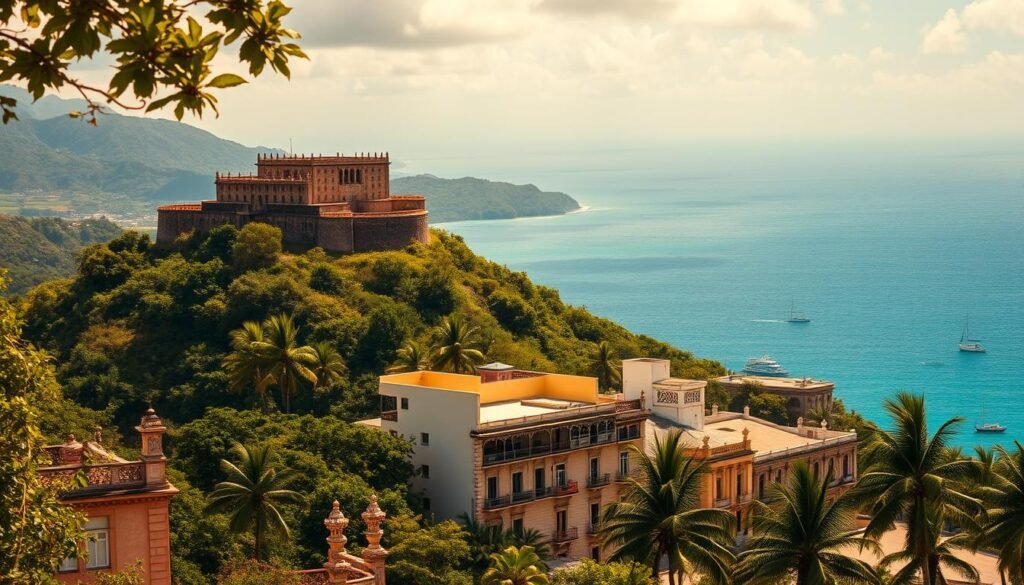Physical Address
304 North Cardinal St.
Dorchester Center, MA 02124
Physical Address
304 North Cardinal St.
Dorchester Center, MA 02124

Explore the vibrant culture and natural beauty of Haiti with our expert-curated trip planning tips. Ensure a safe and memorable vacation.
Traveling to Haiti can be a rewarding experience, with its rich history and vibrant culture. However, it’s essential to plan carefully to ensure a safe and enjoyable trip.
Understanding the current situation in Haiti and being prepared with the right information and essentials can make a significant difference. With expert-curated travel tips, you can navigate the challenges and enjoy the beauty of Haiti.
Before planning a trip to Haiti, it’s crucial to understand the country’s current situation to ensure a safe and enjoyable journey. Haiti has faced various challenges in recent years, including political instability and natural disasters, which have impacted the country’s safety and infrastructure.
The political climate in Haiti can be volatile, with periodic protests and demonstrations. Travelers should stay informed about local conditions and avoid areas of unrest. It’s also essential to be aware of your surroundings and keep valuables secure. According to the U.S. Department of State, travelers should exercise increased caution when traveling to Haiti due to crime and kidnapping.
Recent developments in Haiti include efforts to improve infrastructure and security. Travelers should be aware of these changes and plan accordingly. Some key areas to watch include:
By staying informed about Haiti’s current situation, travelers can make the most of their trip while minimizing risks. As Dr. Jean-Maxime Chérestal, a Haitian cultural expert, notes, “Understanding and respecting local customs and conditions is key to a successful and enriching experience in Haiti.”
The best time to visit Haiti depends on your preferences, whether you’re looking for a relaxing getaway or an immersive cultural experience. Haiti is a year-round destination, but understanding its climate and cultural events can help you plan a more enjoyable trip.
Haiti’s climate is generally warm and sunny, with average temperatures ranging from 70°F to 90°F (21°C to 32°C). The country experiences a wet season from May to October, with the most significant rainfall occurring in September and October. If you prefer drier weather, consider visiting between November and April.
Haiti is known for its vibrant cultural events, including the Carnival, which takes place before Lent. The Flag Day celebrations on May 18th are another significant cultural event, showcasing Haitian history and unity. Planning your trip around these events can enrich your cultural experiences and provide a deeper understanding of Haitian culture.
Before embarking on your journey to Haiti, it’s essential to understand the necessary travel documents and entry requirements to ensure a smooth and enjoyable trip.
American travelers need to be aware that Haiti requires a valid visa for entry. The process involves submitting an application along with required documents such as a valid passport, proof of onward travel, and sufficient funds. It’s advisable to check with the Haitian embassy or consulate for the most current visa requirements and processing times.
To travel to Haiti, ensure your passport is valid for at least six months beyond your planned departure date. Additionally, prepare the following documents:
Having these documents in order will facilitate your entry into Haiti and help avoid any potential issues during your trip.
For safe travel to Haiti, it’s also recommended to register with your country’s travel advisory department and stay informed about local conditions. By being well-prepared with the necessary documents and information, you can focus on enjoying your trip while maintaining Haiti safety awareness.
Before embarking on your Haitian adventure, it’s crucial to prepare yourself health-wise to ensure a safe and enjoyable trip. Haiti, like many developing countries, presents certain health risks that travelers should be aware of.
To protect yourself against potential health threats, consult your healthcare provider or a travel clinic about the necessary vaccinations and medications. Routine vaccinations such as MMR, DTaP, and polio are usually recommended, while Hepatitis A and Typhoid vaccinations are often suggested for travel to Haiti due to the risk of contaminated food and water.
Additionally, consider any personal health needs or risks. For instance, if you’re planning to spend time outdoors, you may need protection against malaria or other insect-borne illnesses.
Adequate health insurance is vital when traveling to Haiti. Ensure your policy covers international travel and includes provisions for medical evacuation, as Haiti’s medical facilities may not meet the standards you’re accustomed to.
While major cities like Port-au-Prince have some quality medical facilities, more remote areas may have limited access to healthcare services. Understanding your insurance coverage and knowing where to seek medical help can significantly impact your safety and well-being during your trip.
To experience the beauty and vibrancy of Haiti, it’s essential to plan your trip with safety and cultural immersion in mind. A well-structured travel guide can make all the difference in ensuring a memorable and stress-free journey.
When planning your trip to Haiti, creating a realistic itinerary is crucial. This involves researching destinations, understanding travel times between locations, and allowing for flexibility in your schedule. Consider visiting historical sites like the Citadelle Laferrière, exploring the vibrant culture of Port-au-Prince, or relaxing on the beautiful beaches of Labadee.
Safety should be a top priority when traveling to Haiti. Stay informed about local conditions, avoid traveling alone at night, and use reputable transportation services. It’s also wise to stay in well-reviewed accommodations and be mindful of your belongings, especially in crowded areas.
Connecting with local resources can greatly enhance your Haitian experience. This can include hiring local guides who can provide insights into the culture and history of the area, dining at local restaurants to taste authentic cuisine, and participating in community-based tourism initiatives.
| Resource | Description | Contact Information |
|---|---|---|
| Local Guides | Experienced guides who can provide cultural insights and historical context. | info@haititourism.com |
| Reputable Transportation | Safe and reliable transportation services. | transport@haitisafe.com |
| Community Tourism | Initiatives that support local communities through tourism. | community@haititourism.org |
By following these steps and being mindful of Haiti safety, you can have a fulfilling and enjoyable trip. Embrace the cultural experiences that Haiti has to offer, from its vibrant festivals to its rich historical heritage.
When preparing for a trip to Haiti, it’s crucial to pack wisely to ensure a safe and enjoyable journey. The right luggage contents can make a significant difference in your travel experience.
Haiti’s tropical climate means you’ll want to pack lightweight, breathable clothing. Include a mix of short and long-sleeved shirts, comfortable pants, and a hat for sun protection. Don’t forget swimwear for enjoying Haiti’s beautiful beaches.
Safety and health should be your top priorities. Pack a first-aid kit with essentials like band-aids, antiseptic wipes, and any personal medications. Consider including a water purification system or water purification tablets to ensure access to safe drinking water.

Haiti uses Type A and B power sockets, and the standard voltage is 110V. Bring a universal power adapter and a portable charger to keep your devices powered up throughout your journey.
By focusing on these essentials, you’ll be well-prepared for a safe and enjoyable trip to Haiti.
Traveling within Haiti requires a good understanding of the local transportation options to ensure a safe and enjoyable trip. Haiti’s transportation network is varied, offering several ways to get around, whether you’re navigating the bustling streets of Port-au-Prince or traveling between cities.
In Port-au-Prince, the capital city, transportation options include tap-taps, which are colorful, privately-owned buses that follow specific routes, and motorcycle taxis, known locally as “moto taxis.” While tap-taps are an affordable and lively way to experience the city, moto taxis offer a quicker, though more expensive, alternative.
For a more personalized experience, many travelers opt to hire a private driver for the day. This option provides flexibility and can be particularly useful for those who are not comfortable navigating the local transportation system or prefer to avoid it altogether.
For inter-city travel, Haiti has a network of buses and minivans that connect major towns. These services are generally affordable and offer a straightforward way to see the country. However, the condition of the roads can vary, and some areas may require a 4×4 vehicle, especially during the rainy season.
When deciding between hiring a driver and using public transportation, several factors come into play. Hiring a driver offers the advantage of personalized service and the ability to create a customized itinerary. On the other hand, public transportation is more budget-friendly and provides an authentic local experience.
| Transportation Method | Cost | Convenience |
|---|---|---|
| Tap-Taps | Low | Medium |
| Moto Taxis | Medium | High |
| Private Drivers | High | Very High |
| Inter-City Buses | Low | Medium |
Ultimately, the choice between hiring a driver and using public transportation depends on your budget, comfort level with local customs, and personal preferences. By understanding the available transportation options in Haiti, travelers can better plan their trip and enjoy a more stress-free experience.
From luxury resorts to budget-friendly guesthouses, Haiti has a wide array of accommodation options to suit various travel needs. Whether you’re looking to indulge in the lap of luxury or save on your Haiti travel expenses, there’s something for everyone.
For those seeking a luxurious experience, Haiti boasts several high-end hotels and resorts. The Karibe Hotel in Pétion-Ville is a popular choice, offering elegant rooms and top-notch amenities. Another excellent option is the Hotel Oloffson in Port-au-Prince, known for its charming colonial architecture and lush gardens.
Travelers on a moderate budget can find comfortable and affordable accommodations in Haiti. The Montana Hotel and Hotel Le Plaza are well-regarded mid-range options, offering a balance of quality and price. These hotels provide a great way to experience Haiti without breaking the bank on budget travel.
For the more budget-conscious traveler, Haiti has numerous affordable guesthouses and hostels. Options like Backpacker’s Paradise offer a social atmosphere and basic amenities at a low cost, making budget travel in Haiti accessible to all.
In conclusion, Haiti’s diverse accommodation options ensure that every traveler can find a suitable place to stay, regardless of their budget. By choosing the right accommodation, you can enhance your overall Haiti travel experience.
From historical landmarks to breathtaking natural wonders, Haiti is a treasure trove of experiences waiting to be explored. Whether you’re a history buff, a culture vulture, or an adventure seeker, Haiti has something to offer.
Haiti is home to numerous historical sites and cultural landmarks that reflect its rich heritage. The National Palace, although damaged in 2010, remains a significant historical site. Cité Soleil, on the other hand, offers a glimpse into the daily lives of Haitians. Visitors can also explore the Musée du Panthéon National Haïtien to learn about the country’s history and culture.

Haiti’s natural beauty is as captivating as its history. The Bassin-Bleu waterfall is a must-visit, offering a serene and picturesque setting. For beach lovers, Labadee and Jacmel beaches provide perfect spots for relaxation and water activities.
| Location | Type | Description |
|---|---|---|
| Bassin-Bleu | Waterfall | A serene and picturesque waterfall |
| Labadee | Beach | A popular spot for relaxation and water activities |
| Jacmel | Beach | Known for its vibrant culture and beautiful beaches |
For those looking to venture off the beaten path, Haiti offers unique experiences. Visiting the Haitian Art Market in Port-au-Prince can be a fascinating experience, showcasing local art and craftsmanship. Additionally, exploring the artistic town of Jacmel and its surroundings can be a rewarding adventure.
“Haiti is a country that is full of life, full of culture, and full of history. It’s a place where you can experience the beauty of the Caribbean, the vibrancy of the culture, and the resilience of the people.”
By exploring these must-visit destinations, travelers can gain a deeper understanding and appreciation of Haiti’s complex history, vibrant culture, and stunning natural beauty.
As you prepare for your trip to Haiti, learning about the local culture is essential. Haiti’s unique cultural identity is shaped by its history, religion, and traditions.
Haitian culture places a strong emphasis on respect and hospitality. When interacting with locals, it’s customary to greet them with a handshake or a kiss on each cheek, known as “la bise.” Dress modestly, especially when visiting churches or attending cultural events.
While French is the official language, Haitian Creole is widely spoken. Learning basic phrases like “Bonjour” (hello), “Merci” (thank you), and “S’il vous plaît” (please) can go a long way in showing respect for the culture.
When taking photos, always ask for permission, especially when photographing people or religious ceremonies. Be mindful of your surroundings and avoid capturing images that might be considered offensive or insensitive.
By being respectful and considerate of Haitian customs, you can have a more enriching and meaningful travel experience.
Knowing the right contacts and resources can make a significant difference in case of an emergency in Haiti. Being prepared is crucial for a safe and enjoyable trip.
The U.S. Embassy in Port-au-Prince is a vital resource for American travelers. In case of an emergency, you can contact them for assistance. The embassy provides a range of services, including:
It’s a good idea to register with the Smart Traveler Enrollment Program (STEP) to receive important safety and security updates about Haiti.
In case of an emergency, here are some important numbers to know:
| Service | Phone Number |
|---|---|
| Police | 114 or 122 |
| Fire Department | 116 or 122 |
| Ambulance | 114 or 116 |
Having the right travel insurance can provide peace of mind and financial protection in case of unexpected medical or travel-related expenses. Consider a policy that includes:
Review your policy details to understand what’s covered and what’s not. In case of an emergency, your insurance provider can assist with arrangements for medical evacuation if necessary.
As you plan your trip to Haiti, remember that a safe and enjoyable journey requires careful consideration of several factors. By understanding the current situation, being mindful of cultural norms, and taking necessary precautions, you can have a rewarding Haiti travel experience.
With its rich cultural heritage and breathtaking natural beauty, Haiti offers a unique blend of cultural experiences. From the vibrant streets of Port-au-Prince to the serene beaches of Labadee, Haiti is a destination that promises to leave a lasting impression. By being informed and prepared, you can ensure a safe travel experience and make the most of your time in this beautiful Caribbean nation.
As you embark on your Haitian adventure, stay informed, be respectful of local customs, and take necessary safety precautions. With careful planning and an open mind, you’ll be well on your way to creating unforgettable memories in Haiti.